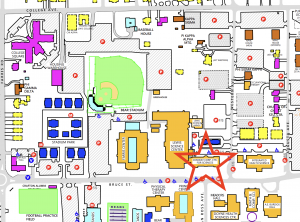Dr. Edmond E. Griffin Planetarium
The Dr. Edmond E. Griffin Planetarium, located on the University of Central Arkansas Campus in the Conway Corporation Center for the Sciences, serves as an astronomy and science education resource center for central Arkansas. The planetarium is part of the outreach component of the Department of Physics, Astronomy, and Engineering, and as such, it supports astronomy teaching on campus, as well as, offers planetarium shows to school groups and the general public.
*Field Trip Information – Click Here*
Hardware/software upgrades will occur during the Spring 2026 semester. Field trip slots for the spring will probably not be available until after April 15.
Spring 2026 Public Shows
Due to planetarium upgrades occurring during the spring semester public shows are on hold until further notice.
SUPPORT GRIFFIN:
ABOUT:
Contact:
Department of Physics and Astronomy
University of Central Arkansas phone: 501.450.5900
Conway, AR 72035 fax: 501.852.2286
Staff:
Dr. Scott Austin saustin@uca.edu
Director of Astronomical Facilities
Associate Professor of Astronomy and Physics
Department of Physics and Astronomy
University of Central Arkansas phone: 501.450.5907
Conway, AR 72035 fax: 501.852.2286
History:
From 1987 to 2015, the original UCA planetarium that was located in Lewis Science Center used an electromechanical planetarium projector and a thirty-foot dome to simulate the sky as seen from the surface of the Earth.
The current digital planetarium in the Conway Corporation Center for the Sciences consists of 94 seats under a forty-foot diameter dome onto which an Evans & Sutherland dual projector Digistar 7 system creates a virtual universe. The universe can now be seen from other locations in the universe, such as, in orbit around Saturn, near a binary star system in our galaxy, or from a galaxy a several million light years from the Earth.
The building of a new planetarium was supported by Dr. Sue Griffin, a world-class neuroscientist at the University of Arkansas for Medical Sciences, and named in memory of her husband Dr. Ed Griffin, a long-time faculty member, chair of the UCA Biology Department, and astronomy enthusiast.




